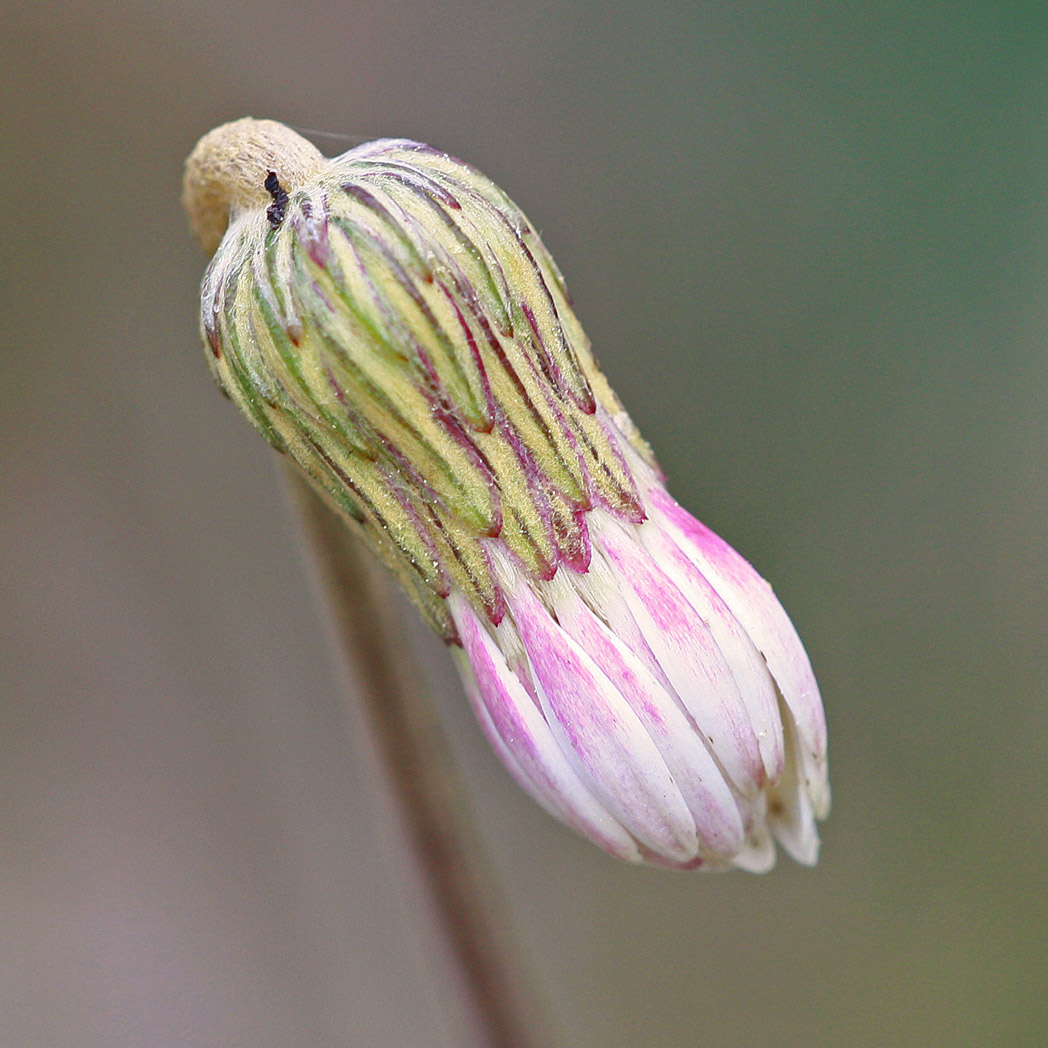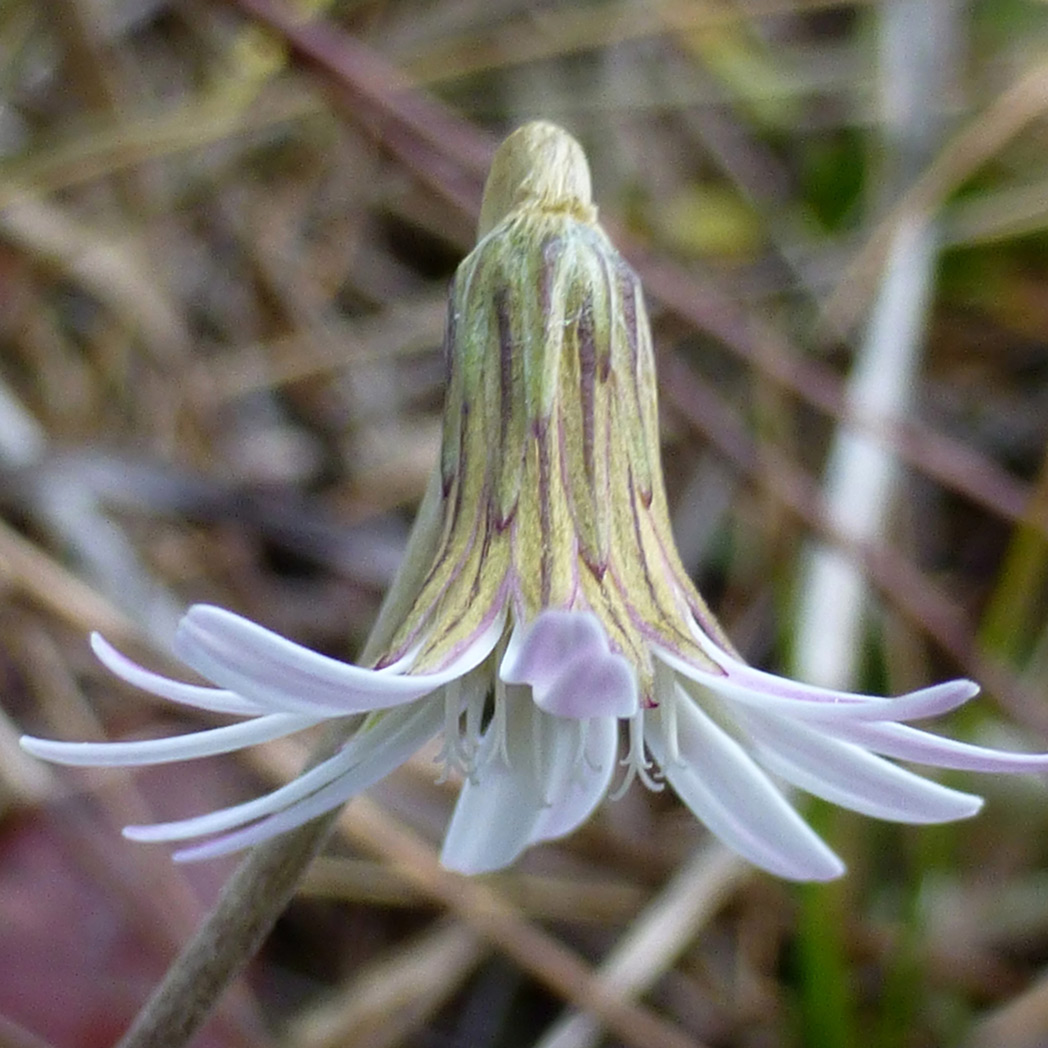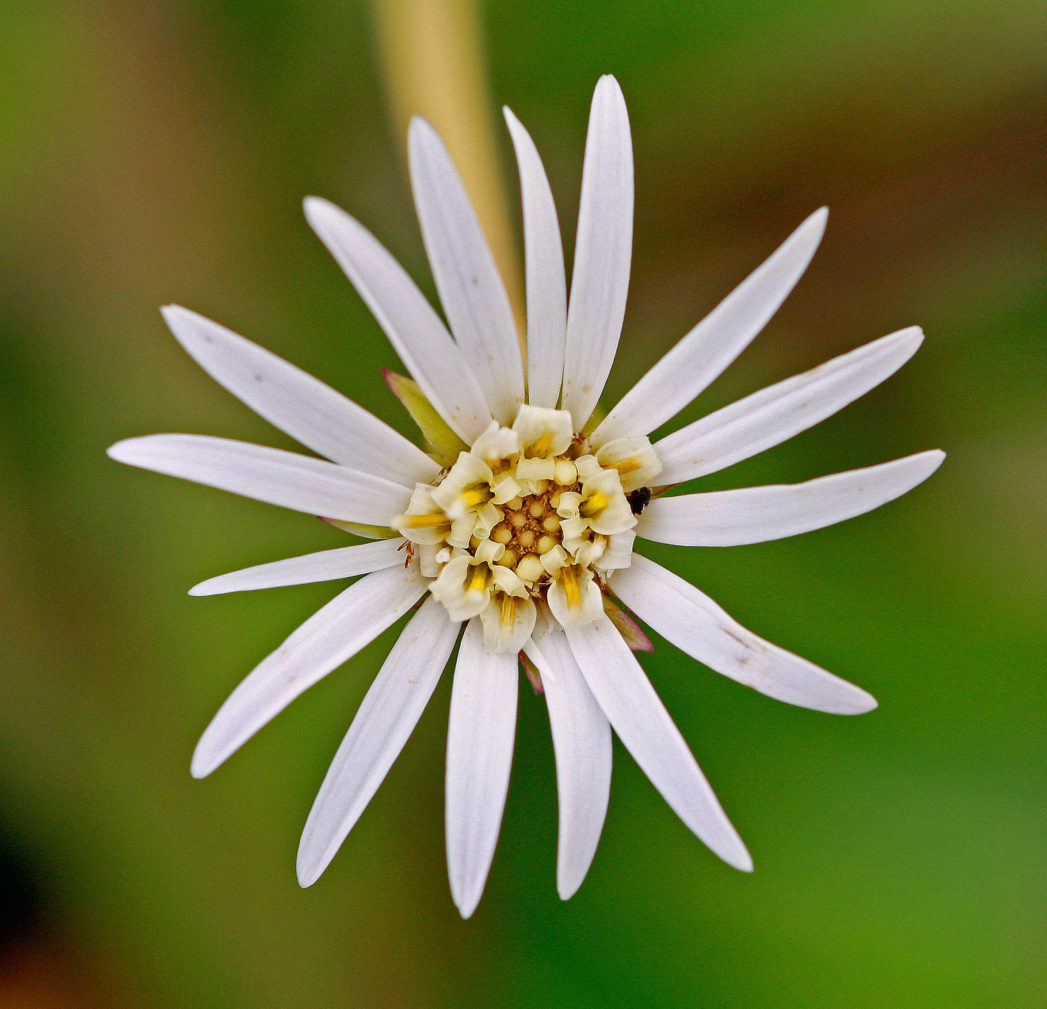Pineland daisy
Pictured above: Pineland daisy (Chaptalia tomentosa) by Mary Keim. Click on terms for botanical definitions. View post as a PDF.
Also known as Woolly sunbonnet, Pineland daisy (Chaptalia tomentosa) is a perennial wildflower found in wet pine flatwoods, freshwater marshes and savannas throughout most of Florida. It typically blooms in early winter through summer, with peak blooming in spring.


Pineland daisy is a perennial wildflower native to moist flatwoods, bogs and freshwater marsh edges. Its attractive solitary flower begins as a purplish-pink bud that opens into a wheel of whitish-yellow disk florets and white ray florets (although a tinge of purple may be noticeable). Flowerheads are closed and nodding until midday, when they become erect and open. Leaves are elliptic and appear in basal rosettes. They have entire or slightly toothed margins, dark green uppers and densely tomentose undersides. Stems are generally leafless, and are also tomentose. Seeds are born in achenes.
The genus Chaptalia is an homage to Jean-Antoine Chaptal (1756–1832), a French chemist, physician, agronomist, educator and philanthropist. The species epithet tomentosa and the common descriptor “woolly” refer to the tomentose leaves and stem. “Sunbonnets” alludes to the initial droop of the flowerhead, which resembles a bonnet.
Family: Asteraceae (Aster, daisy or composite family)
Native range: Nearly throughout
To see where natural populations of Pineland daisy have been vouchered, visit florida.plantatlas.usf.edu.
Hardiness: Zone 8A–10B
Soil: Moist to wet sandy soils
Exposure: Full or filtered sun to minimal shade
Growth habit: up to 12” tall
Propagation: Seeds, division
Garden tips: Pineland daisy is not commercially grown. It is best appreciated in its natural habitat.

